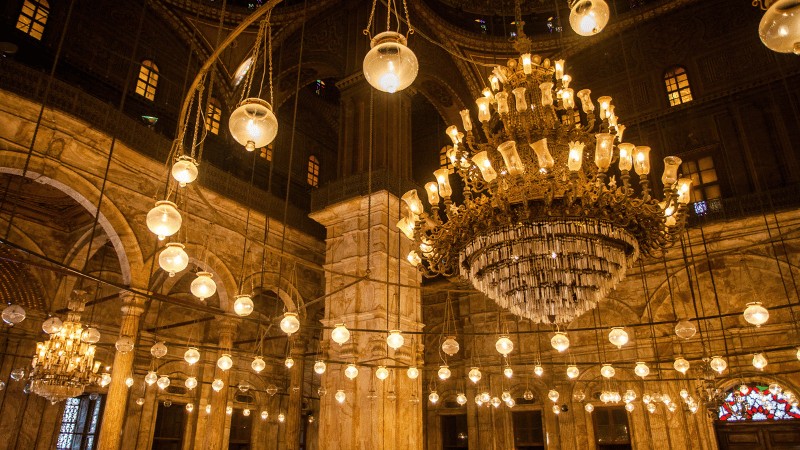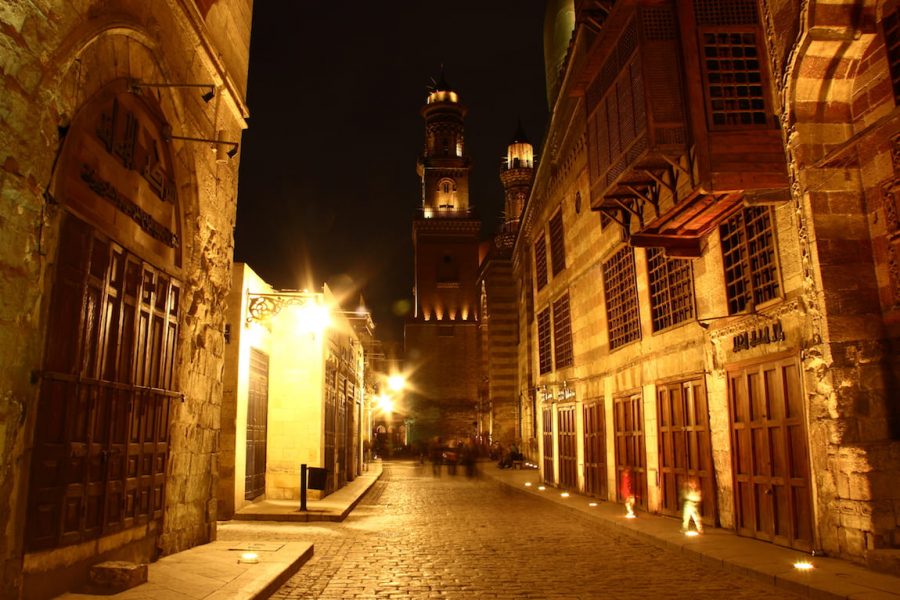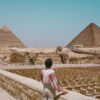イスラム地区カイロのエル・ムイズ通りを歩くと、壮大なオスマン帝国時代のサビールに出会います。
**サビール(Sabil)**とは、公共の給水所を意味するアラビア語で、かつてイスラム世界では裕福な人々が施しとして設置し、誰でも無料で清潔で冷たい水を得られる場所でした。
現在、エジプト織物博物館として使われているムハンマド・アリのサビールは、ファラオ時代から現代まで続くエジプトの織物産業の歴史を伝えています。
このサビールは、エジプトの近代化を推進したムハンマド・アリ・パシャが、戦死した息子イスマイルを偲んで建設したものです。博物館に改装される前は、孤児のための学校として、またその後は小学校として使用され、ナギーブ・マフフーズやガマール・アブドゥル=ナーセルをはじめ、多くの著名なエジプト人がここで学びました。

ムハンマド・アリ・パシャとエジプト織物博物館の歴史
ムハンマド・アリ・パシャは、19世紀にエジプトを統治し、”近代エジプトの建設者” としてエジプト人に広く敬愛されています。彼は、戦場で亡くなった息子イスマイルを偲び、このサビールを建設しました。
博物館として生まれ変わる前のサビール
このサビールは、もともと孤児のための学校として機能し、その後は小学校として使われました。ここには、ノーベル文学賞を受賞した作家ナギーブ・マフフーズや、エジプト元大統領ガマール・アブドゥル=ナーセルなど、多くの著名なエジプト人が通っていました。
エジプト織物博物館の見どころ
この博物館は2階建てで、11の展示室に分かれています。展示品には、布や装飾織物を通じてエジプトの歴史をたどる貴重な品々が並んでいます。
- ファラオ時代の衣類と寝具
博物館の展示の大部分はファラオ時代に遡る貴重な品々で、古代エジプト人が日常生活で実際に着用していた衣類を見ることができます。
特に注目すべきは、エジプト古代史において唯一の女性王であるハトシェプスト女王のものとされるベッドシーツ。科学者によってその起源が確認されており、非常に貴重な展示物となっています。
さらなるカイロの歴史探訪へ
カイロの豊かな歴史をさらに深く知りたい方には、グランド・イスラム・デイツアーがおすすめです。このツアーでは、エジプトの歴史的に重要な数々のスポットを巡ることができます。
エジプト織物博物館の魅力:死後の世界とコプト織物の黄金時代
死後の世界を彩る織物
エジプト織物博物館の興味深い展示のひとつが、死後の世界に関連する織物です。ここでは、様々な冥界の神々のイメージが描かれた亜麻布の死装束などを間近で見ることができます。
グレコ・ローマン時代とコプト織物の黄金期
館内を進むと、グレコ・ローマン時代の展示室に到達します。この時代は、エジプトの織物史におけるコプト織物の黄金時代とされています。特に、コプト時代の織物は色彩豊かで精巧なデザインが特徴で、エジプトの織物芸術の最高傑作といわれています。
イスラム美術や歴史に魅了される方には、
🏰 サラディン城塞&ハーン・エル・ハリーリ・バザール・カイロツアー が必見です!
バガワット墓地からの貴重な展示
このセクションの多くの展示品は、西部砂漠のカルガ・オアシスにあるバガワット墓地から出土したものです。この墓地には、先史時代にまで遡る多くの墓や礼拝堂が残されており、非常に保存状態の良い織物が展示されています。
トゥルーン朝時代の織物の変化
この時代には、依然としてコプト様式が主流でしたが、トゥルーン朝時代に入ると、織物の装飾に人間の描写がなくなり、代わりに鳥や植物のモチーフが用いられるようになりました。
専門家によると、この時期に最も使用された素材は**亜麻布(リネン)**であり、染色された羊毛もよく使われました。特に、ベージュや紫色が一般的だったと考えられています。
エジプト織物博物館:イスラム時代の織物と神聖な伝統
エジプト織物博物館では、イスラム時代の織物も展示されており、その歴史は7世紀のアラブ征服時代にまで遡ります。
カアバ神殿を覆う神聖な布「アル・キスワ」
博物館内の11の展示室のひとつには、特別な展示品として**「アル・キスワ」が飾られています。これはメッカのカアバ神殿を覆うために特別に作られた布**で、展示されているものは、国王ファルーク(在位1936~1952年)の時代のものです。
アル・キスワは、巡礼者がハッジの際にアラファト山へ向かうズー・アル・ヒッジャ月9日に毎年掛け替えられる伝統があります。
エジプトとアル・キスワの歴史的つながり
中世から20世紀半ばにかけて、エジプトは毎年新しいキスワを製作し、ハッジの前にサウジアラビアへ贈る伝統を持っていました。 この神聖な布は、エジプトとイスラム世界の深い結びつきを象徴するものとして、非常に重要な役割を果たしていました。
カイロのさらなる魅力を発見する旅へ
🏛 カイロ・プライベート・デイツアー や カイロ・スモールグループ・デイツアー では、エジプトの豊かな歴史と文化をさらに深く探求できます。
あなたの旅の物語が始まる
Travel2Egyptでは、あなたの旅の物語を大切にし、ひとつひとつの体験が新たな章となるようサポートします。エジプトの神聖な遺跡や隠れた名所へとご案内し、あなたの探求心に響く特別な旅を創り上げます。
🌍 総合旅行ガイドで、次のエジプト旅行のインスピレーションを探しましょう。
📞 私たちにご相談ください。ナイルの流れや砂漠の風のささやきに合わせた、あなただけの旅をカスタマイズします。
✨ 「私たちがあなたをエジプトの心へと導くコンパスとなります。そこでは、一粒の砂にも物語があり、すべての瞬間が宝物となるのです。」 ✨
📍 今すぐ Travel2Egypt.org へ!
あなたの旅をキャンバスに、私たちとともに夢の傑作を創り上げましょう。お問い合わせのうえ、ファラオの国を巡る永遠の旅を始めてください。






